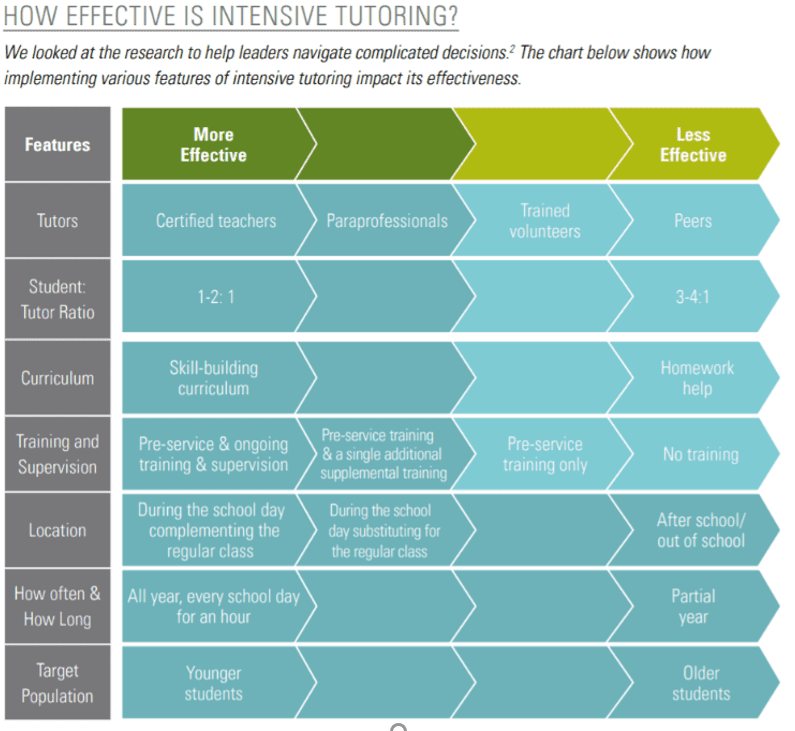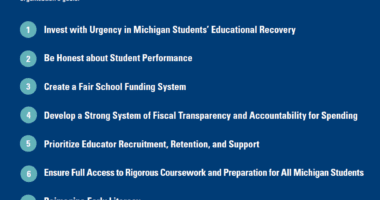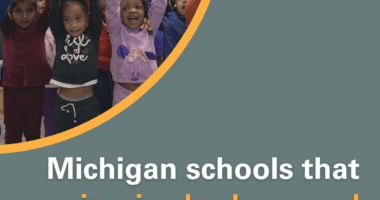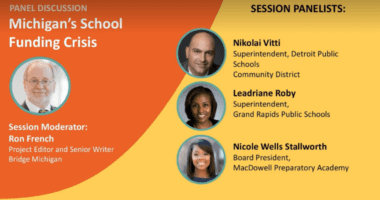Targeted Intensive Tutoring: A Strategy to Address Unfinished Instruction Due to the COVID-19 Pandemic
Students across Michigan are now back to school after two school years of interrupted learning due to the COVID-19 pandemic. Accompanying them is the reality that thoughtful, research-based consideration is needed about how to address this unprecedented period of unfinished instruction.
A significant factor to consider is that many districts were forced to switch to remote learning in the spring of 2020, with children experiencing a combination of in-person, hybrid, and remote instructional models throughout the 2020-21 school year. As a result, many students may have significant unfinished learning, particularly those disproportionately impacted by the pandemic – including Black and Latino students, as well those from low-income backgrounds.
While research suggests that students could experience five to nine months of unfinished instruction, students of color could experience six to twelve months of unfinished instruction, which is described as material that should have been presented to students but has not yet been mastered. To help leaders make important decisions while planning and implementing best strategies such as targeted, intensive tutoring, The Education Trust and MDRC released several research briefs. In this article, we tackle the brief, “Targeted Intensive Tutoring as a Strategy to Solve Unfinished Learning.”

Targeted intensive tutoring is an evidence-based strategy that can help address unfinished instruction due to the pandemic. Sometimes known as high-dosage tutoring, it is a specific form of tutoring that is most effective when an individual, certified tutor works with small groups of children (no more than four) frequently and regularly throughout the year. Ideally, the tutor would have access to a skill-building curriculum that is closely aligned to classroom curriculum and tailored to each student’s needs. Tutors should also receive pre-service training before, and ongoing support throughout, the tutoring program. Here in Michigan and across the nation, school, district, and state education leaders should consider the following:
- While this tutoring is effective for all students, it is most effective for younger children – potentially doubling a typical years’ worth of learning.
- Tutors with teaching experience or training are the most effective while volunteers may be half as effective, but also the least expensive.
- Sessions are more efficient with just two students; therefore tutors with larger groups of students need high-quality, positive classroom management training to better engage up to four students.
- Training for tutors should include specific curriculum goals, how to manage tutoring sessions, instructions on key program procedures, and relationship building strategies that set high expectations for all students.
- Sessions should be held during the school day as a supplement since tutoring outside of the school day and school-day pull-out programs are less effective.
- Students in grades two through twelve benefit most from math tutoring sessions while reading tutoring sessions seem to be most impactful on PreK through first grade students.
A number of successful tutoring programs have been implemented across the country that highlight current promising practices. Targeted Reading Intervention (TRI) is one such program that supports early readers, especially in rural communities. For 15 minutes a day, certified teachers work with young readers to develop decoding, comprehension, vocabulary, and fluency skills that result in a significant impact on students’ reading ability. Moreover, instructional coaches used webcam technology to provide ongoing training to tutors, highlighting virtual opportunities for rural communities.
Number Rockets is another successful tutoring intervention, particularly for first graders with unfinished instruction in math. Groups of up to three students participate in three, 40-minute school-day tutoring sessions per week for 17 weeks that are hosted by tutors that received significant training. Research showed this program to be very effective, especially for students struggling with math mastery.
What states, district and schools can do
With the recent influx of federal funds, states should develop guidance that helps districts and schools implement effective, targeted intensive tutoring programs. The guidance should include requirements such as:
- Pre-service training and ongoing support for tutors as well as funding to offset the cost
- Small-group, in-school tutoring sessions (for up to four students) that do not pull students out of core classes
- Activities aligned to local curriculum and standards
- Disaggregated data reporting on who received the intervention and program effectiveness
Targeted intensive tutoring can help historically underserved students make significant gains in learning to offset unfinished instruction as well as meet high standards. States, districts, and schools should consider implementing this effective tutoring model to help students achieve academic success after over a year of interrupted instruction.






